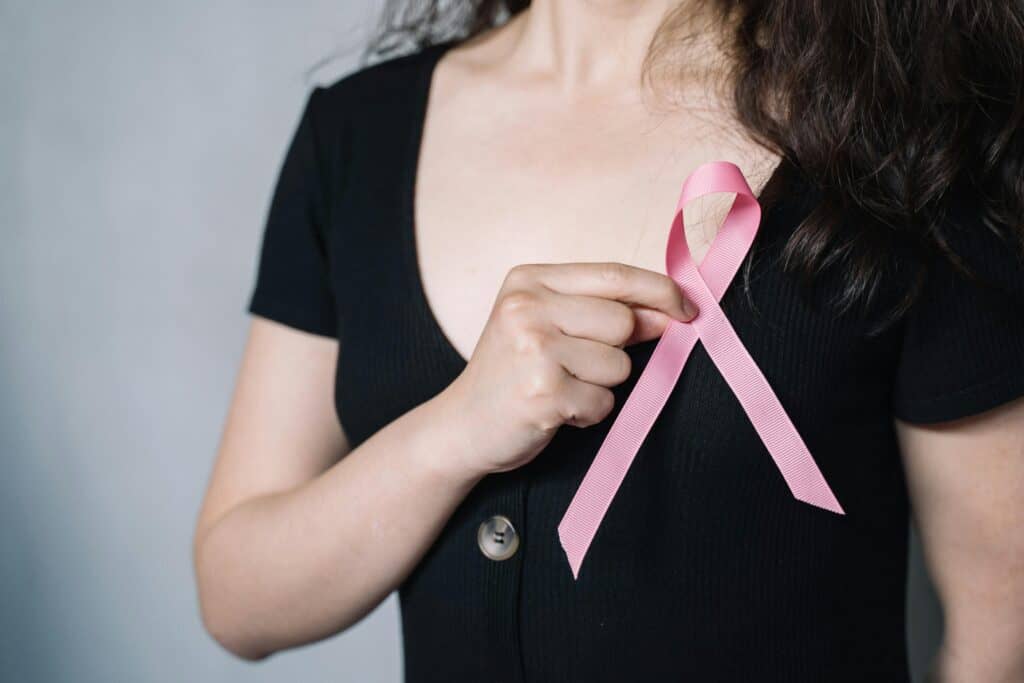In light of Breast Cancer Awareness Month, Dr Rupa Parmar, GP and Medical Director of Midland Health, is sharing the early warning signs of breast cancer.
Dr Parmar said: “Understandably, for many people, the ‘C-word’ can feel very daunting and intimidating. After all, the idea of finding out something is wrong can feel scarier than not knowing at all. Not to mention, doing checks can feel awkward and uncomfortable. But the truth is, it’s not about causing panic. Spotting changes early doesn’t just give you more options. It can make treatment easier and outcomes far better.
“I encourage all women to get familiar with how their bodies normally look and feel. Check in with yourself at least once a month. If something feels or looks off, don’t ignore it. Early detection saves lives.”
8 Potential Signs
Here are some of the early changes or symptoms to keep an eye on.
1. A new lump or thickening
The most well-known sign is a lump in the breast or underarm area. While not every lump is cancerous, and cysts and other harmless changes are common, any lump that feels firm, different from the rest of your breast tissue, or doesn’t go away after your period should be checked.
2. Change in size, shape or fullness
Breasts naturally come in all shapes and sizes, but if you notice one breast looking suddenly larger, smaller, or its shape becoming uneven, it could signal an underlying issue. Comparing your breasts side by side in the mirror can help you spot these changes early.
3. Skin changes
If the skin on your breast starts to dimple, pucker, or take on an orange peel-like texture, it may mean something is happening underneath the surface. These skin changes are usually subtle, so it’s wise to check in good light and make note of anything that looks different.
4. Nipple changes
If your nipple starts to pull inward (invert) or suddenly sits at a different angle than normal, it may be a warning sign. A nipple that looks flattened, twisted, or has changed position should always be assessed by a doctor.
5. Nipple discharge
Unexpected discharge, especially if it is bloody or occurs when you are not breastfeeding, should be taken seriously. In some cases, even clear or milky discharge may signal a problem. In such cases, you should always make an appointment with your GP.
6. Redness, warmth, swelling or pain
It’s crucial not to ignore a breast that feels warmer than usual, looks red or swollen, or has an area of tenderness. While infections like mastitis can cause similar symptoms, breast cancer can also present this way, especially inflammatory breast cancer.
7. Peeling, scaling, or crusting
If the skin on or around your nipple starts peeling, scaling, or forms a persistent crust, it may be more than simple irritation or eczema. Pay special attention if these changes don’t improve with skin care or come back repeatedly.
8. Swelling or lump in the armpit or collarbone
Breast tissue extends into the armpit, and cancer may show up first as a lump in this area. If you notice swelling, hardness, or tenderness near your collarbone or underarm, you should get checked.
How to Check Your Breasts Yourself
While self-checks aren’t a substitute for medical exams or screening, they can help you notice something unusual earlier.
Here’s how to do a breast self-check in a few easy steps:
- Look in the mirror – Stand with your arms relaxed, then raise them over your head and place them on your hips. Look for changes in size, shape, skin texture, or nipple position
- Feel while lying down – Use flat fingers in circular motions across the whole breast, armpit, and collarbone area. Apply light, medium, and firm pressure to feel all tissue layers
- Feel while standing or sitting – Many find this easier in the shower. Use the same technique, covering the same areas
“If you notice anything new, whether it’s a lump, change, or persistent pain, book an appointment with your GP immediately”
For more information on self-examinations, read CoppaFeel’s guide on checking yourself.

